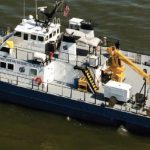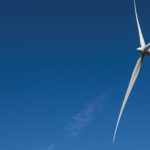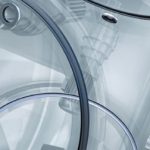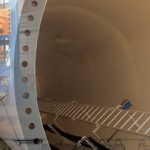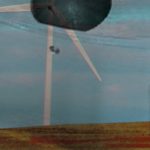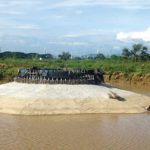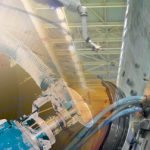Nearly all utility-scale wind farm management systems have state of the art automatically controlled wind turbines, but at the electric grid intertie the substation is often managed manually. Some substations may have remote control capabilities, to be sure, but they are still completely manually controlled and require operator intervention for restoration. The real irony is that the cost to implement a full auto-restoration scheme at a modern substation with intelligent electronic protection devices is likely to cost no more than the lost revenue of one extended substation outage, and so it’s truly being “pennywise and pound foolish” to avoid implementation of such a system.
The modern wind farm grid intertie substation uses what is termed as intelligent electronic devices, or “IEDs.” An IED is any microprocessor-based unit that receives voltage, current, status, or other data from sensors and other devices and can issue commands via hardwire contacts or communication ports based upon internal programmed setpoints and logic. Substation IEDs are typically a variety of digital relays, digital logic processors, communication processors, and real-time controllers. The signals from inputs are interpreted in a systematic and predetermined way so that the system power devices are energized, de-energized, or otherwise controlled appropriately. The digitized analog values, status bits, timing functions, and logic functions that are integral elements of the substation IEDs can be leveraged to add auto-restoration capability to the substation. Although few if any IEDs must be added to perform auto-restoration, there is necessary effort to program the IEDs for auto-restoration. Standardization of the IED schemes minimizes the effort to programming, test, and commission the IEDs, and therefore the cost to implement auto-restoration. A simplified distributed wind generation substation diagram is shown in Fig .1.
A manually restored substation will have the protection relays indicated on the left side of fig. 2 under the heading “basic.” The scheme status switches are feedback indicating the system status of breakers and relays, etc. The relay IED scheme buttons are manually actuated locally or remotely to set the scheme into the desired mode. An auto-restoration may then be initiated manually using proper timing and the devices on the “basic” side of the diagram. A substation is fully automated by the addition of the microprocessor-based logic processor IED indicated on the right side of Fig. 2 under the heading “advanced.” The logic processor IED communicates with the substation relay IEDs to determine the status of all the power devices in the substation, and then upon pre-programmed logic stored in the memory of the logic processor IED the auto-restoration will be executed automatically at the appropriate time using measured data rather than timing to restore the substation.
The restoration sequence for a fully automated wind project follows the state flow diagram in Fig. 3. The normal state in which turbines are generating and providing electrical energy to the utility grid is the “normal” state at the top right of the diagram. When there is line fault or system disturbance the EPS breaker (breaker “U2” in Fig .1) will open and the system changes to the “EPS disconnected” state. The flow of energy to the grid ceases and electrical energy is no longer marketable. During the transition to the next state, two timed sequences are activated simultaneously. First a “power fail trip” status (labeled “PF trip” in Fig. 3) is declared three or more seconds after the loss of three-phase voltage. All relays for the line, feeder, and capacitor breakers are programmed with this status and all line, feeder, and capacitor breakers are opened at this time. The EPS breaker will close after the utility has cleared the fault or disturbance and the power fail trip operations have completed. The system state is now “ready for restoration.” The line breaker (breaker “U1” in Fig .1) will close if the appropriate conditions are all true after a set time delay. After the line breaker is closed, the feeder breakers will automatically close one at a time with predetermined time delays. Typically all the feeder breakers close in 10-second intervals so that all feeders are restored within one or two minutes. Once all feeder breakers are closed the collector substation returns to the “system available for generation state.” The total outage time for a fully automated collector project—turbines and substation—is typically 10 minutes or less. Any outage time due to the loss of the utility source is minimized and therefore provides optimized generation availability.
The value of automated substation restoration can be calculated by the economic advantage of reduced outage time relative to the longer time required for manual restoration. For a typical 100 MW wind farm with 33 percent generation capacity that is connected to the utility grid 70 percent of the time, the value per hour for lost delivery to the grid when generation would otherwise have been available is $3,500 per hour at 7.5 cents per kilowatt-hour. If manual restoration requires 12 hours before restoration can be accomplished, then the total energy value for this example is $42,000. It should be noted that this represents only the economic energy advantage and does not take into account the avoided cost for labor and vehicle expenses that are incurred with manual restoration. Manual restoration cost includes accounting for the time for an operator to be notified of the outage, the operator to travel to and from the collector substation, to analyze the reason for the outage, and then perform the restoration. The savings may be less than 12 hours if the manual restoration can be accomplished in good weather when an operator is readily available, but on a weekend night in inclement weather the time for manual restoration can be one or two days. After considering all these factors it is not difficult to recoup the investment for the auto-restoration investment after only one or two line outages.
The provision for auto-restoration on distributed generation, particularly for utility-scale wind farms, has been shown to be very feasible, with the microprocesser based relays and communication processors already being used to protect the collector substation that is part of every renewable energy project. With renewable energy very much dependent upon the uptime and delivery of energy to the grid, auto-restoration provides a very good way to accelerate the return on the large capital investment required for renewable generation. With only a marginal investment, the addition of auto-restoration may pay for itself in as few as one or two outages.




















